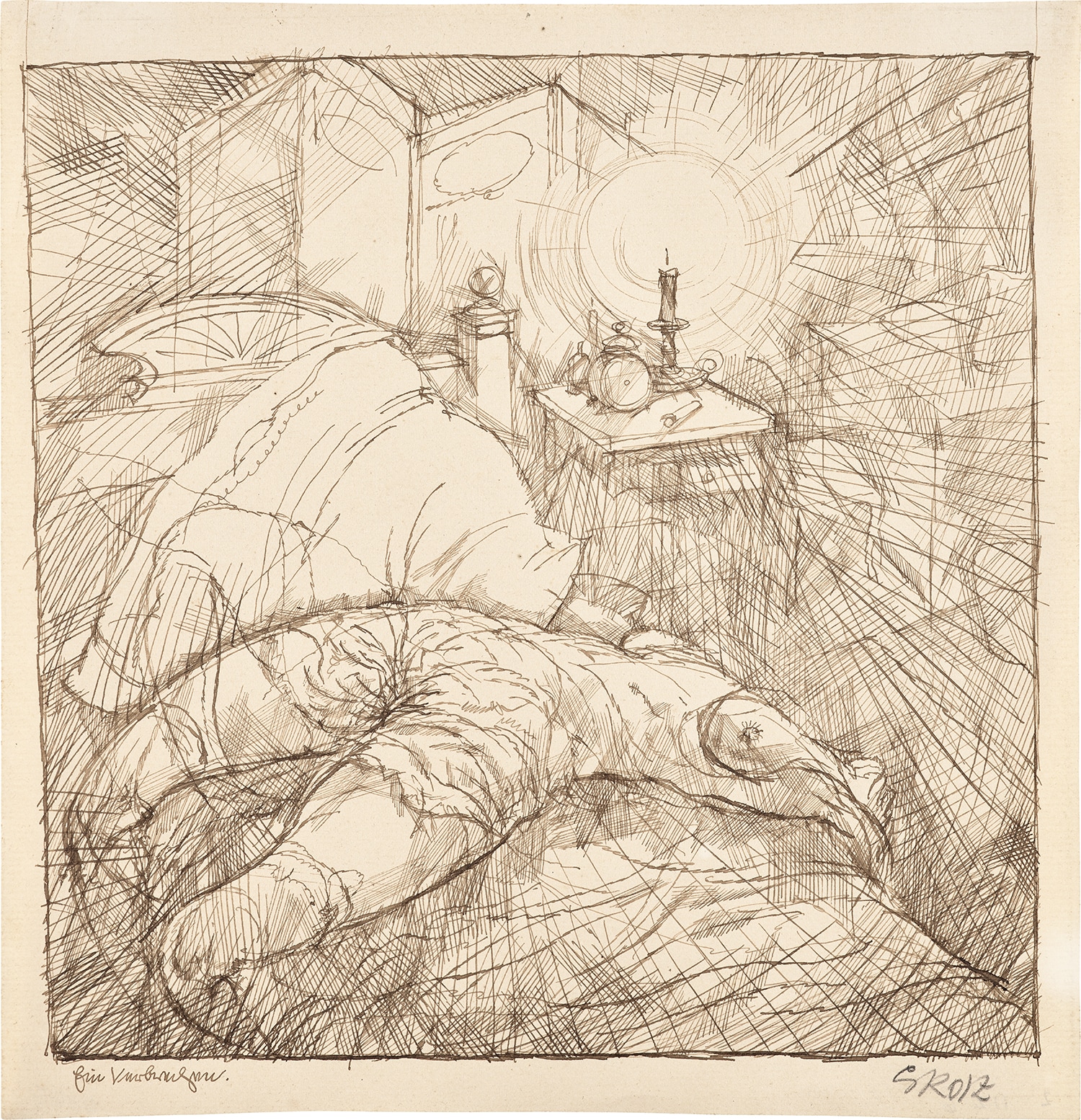

126
George Grosz
Ein Verbrechen (A Crime)
c. 1913-14
Unique sepia reed pen, pen and ink drawing, on Erclass typewriter laid paper.
9 1/8 x 8 3/4 in. (23.2 x 22.2 cm)
Signed in pencil and titled in pen, with the George Grosz Estate stamp (faded) and annotated '2 112 6' in black ink on the reverse, accompanied by a Certificate of Authenticity issued by Dr. Ralph Jentsch (director of the estate).